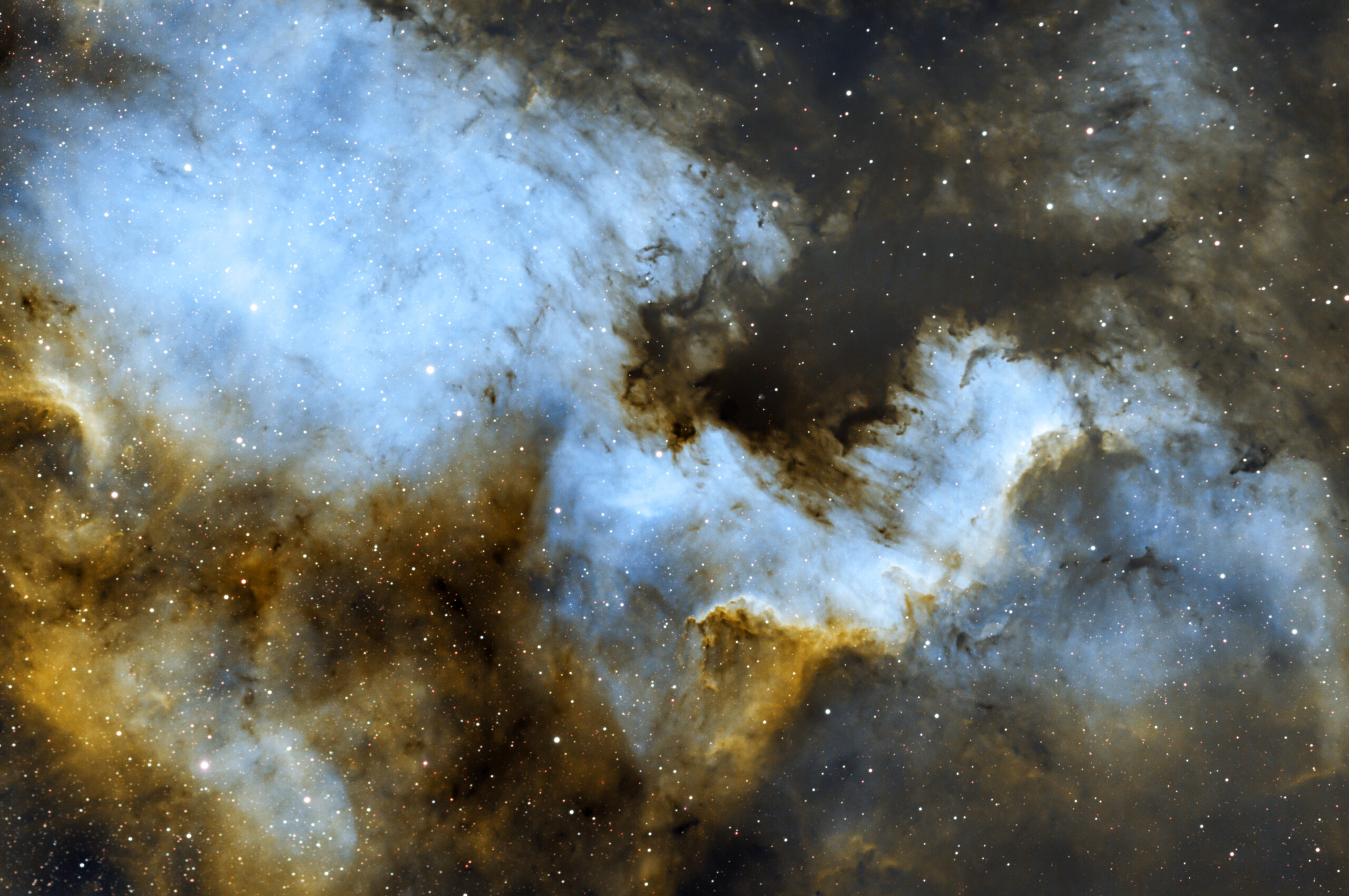Cygnus Wall and the North American Nebula (NGC7000)

By Anton Winter

A few weeks ago, on September 24th, 2022, I finally had the time (and clear skies) to capture some good data on the Cygnus Wall star-forming region, which is part of the North American nebula (NGC7000).
This target was one of two consecutive nights of imaging using the new astrophotography equipment I’ve been slowly upgrading over the past two years. Yes, it’s been that long since I have done any ‘serious’ imaging!
So what is the new equipment?
- Telescope: SkyWatcher ESPRIT 100ED
- Imaging Camera: QHY-268C
- Guide Scope: PrimaLuceLab 60mm
- Guide Camera: ZWO ASI2900MM
- Mount: SkyWatcher EQ66-R Pro
- Electronic Focuser: PrimaLuceLabs SESTO SENSO 2
- Filter: Optolong L-Extreme dual-band astronomy narrow-band filter (Hb, Ha, and OIII)
- Capturing Software: N.I.N.A.
The Cygnus Wall is a wall of bright interstellar gas and shadowy dust, making it a rich star-forming region. When the dust clouds are massive enough, they undergo gravitational collapse, allowing them to form many new stars.
How much data was captured?
Exposure Time: 5.5 hours
I would have been happy to get a couple of hours of data on this target, but I fell asleep during the acquisition! Thankfully due to some new automation routines, I could programmatically do the meridian flip, run autofocus routines, and continue capturing data until I reached a horizon cutoff!
Automation FTW!
What about Processing?
This was hard. This was my first time using a dual-band narrowband filter that transmits only Hydrogen-Alpha and OxygenIII emission lines. Using a lot of pixelmath in PixInsight, I essentially used the Hydrogen Alpha (Ha) and Oxygen III (OIII) bands to produce a ‘HOO’ (Red=Ha, Green=OIII, Blue=OIII) image similar to the Hubble palette.
Processing this much data, using new (to me) methods of reassembling the channels as HOO was a bit of a learning curve and took a good part of a week of trial and error to do, but I’m certainly happy with the results of both the processing and the new imaging train.